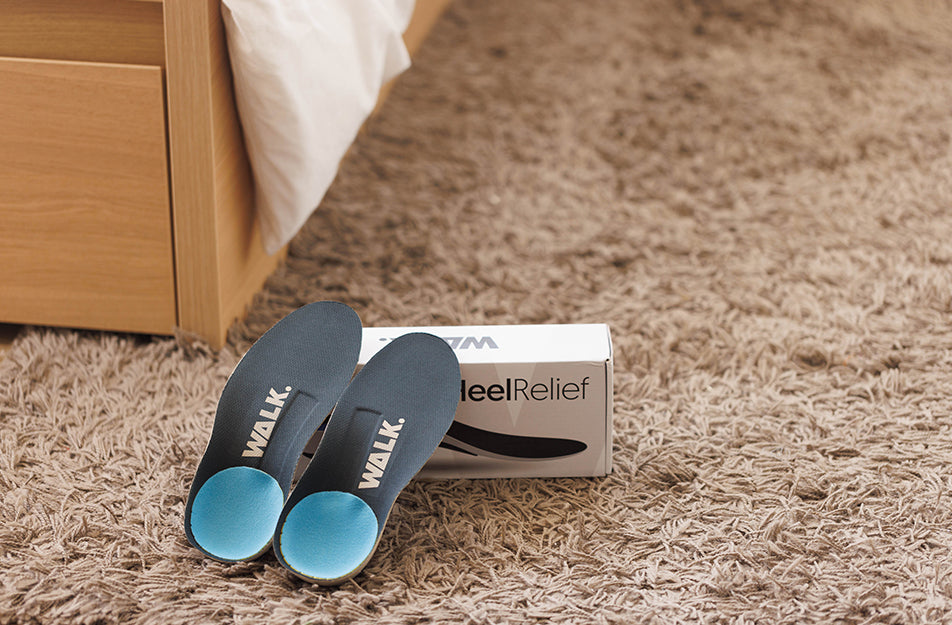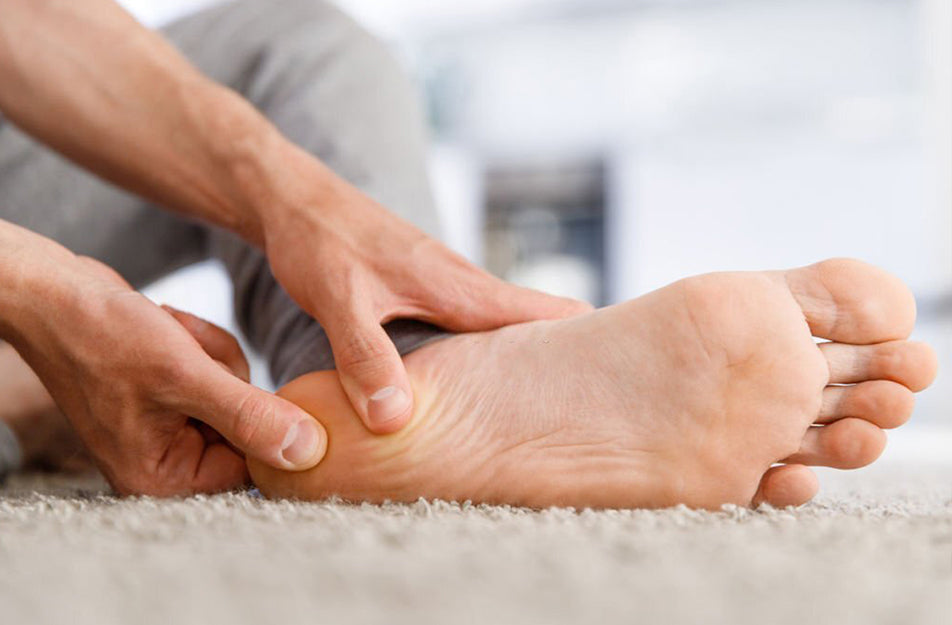Do you know that one in ten people suffer from Plantar fasciitis in their lifetime?
Plantar fasciitis, a condition that gives you a heavy dose of throbbing pain in your feet is linked to inflammation of the plantar fascia ligament. In adults, plantar fasciitis makes up 11-15 % of the foot symptoms that need the attention of a professional.
You might be trying to find answers to the questions: what is plantar fasciitis, how to cure plantar fasciitis in one week, has anyone had success in treating plantar fasciitis and does plantar fasciitis heal? But let's start from the basics.
What is Plantar Fascia?
Plantar Fascia is a thick, weblike ligament connecting your heel to the foreside of the feet. Besides this, it acts as a shock absorber and aids the foot's arch.
Causes of Plantar Fasciitis
Excessive stress and pressure on the foot can cause the plantar fascia to either be damaged or tear the ligaments. This inflammation that results paves the path to one of the most usual orthopedic complaints.
Defective formation of the foot promotes plantar fasciitis. Arches either unduly flat or high-arched feet are more susceptible to plantar fasciitis. The stabbing pain as a result of the arches is observed when one stands for long periods. Other than this, obesity and overdose can also lead the way to plantar fasciitis.
The wrong type of shoes contributes to the onset of plantar fasciitis. Tight-fitted shoes or shoes that elevate your heels high above the toes escalate pressure in sensitive areas for instance plantar fasciitis.
Runners are also prone to attain plantar fasciitis as their feet are constantly striking the hard ground. The stress in the feet aggravates the symptoms of plantar fasciitis including intensive pain.
About two million people in the United States go to the doctor to get Plantar fasciitis treated. Older adults aged from 40 to 60 years are at more risk as they have been using their feet for a long duration of their life.
Treatment
If not treated on time, plantar fasciitis can become a source of chronic heel pain leading to joint pains such as hip and spin. These pins can alter the way you walk or stand ruining your posture and ease of walking. You might wonder how to cure plantar fasciitis in one week. Following are the ways this can be achieved depending on when you start the treatment.
Conventional methods help in alleviating symptoms of plantar fasciitis if it is not severe.
- OTC medicines (NSAIDs such as aspirin, ibuprofen, and naproxen) assist in reducing pain and inflammation. Do not continue usage of these medications for more than 10 consecutive days.
- Take a break from activities such as sport that stresses your feet.
- Ice your feet for a period of 10 to 15 minutes to reduce inflammation in the feet two times a day. Cover the ice with a piece of cloth to protect the skin from irritation and redness.
- Physical therapy (stretches and massages) helps in treating heel pain. Wearing night splints to bed performs the act of stretching your feet while you sleep. Essential oils such as lavender and lemongrass can be used while massaging to kick this pain relief method up a notch.
- Diet can be improved to get nutrients which are vitamin C, zinc glucosamine, bromelain, and fish oil for healing the tissue. Supplements can also be consumed as an alternative.
- Walking support comprising of boots, crutches, and a cane can be used to take the pressure off the feet and allow for the feet to heal.
- Shoes that are not tight-fitted or high heels should be avoided to keep the feet in their natural position and prevent pain.
- Orthotics/shoe inserts can be used to distribute pressure across the feet. This is where WALK brings you its innovative one-of-a-kind insoles.
Besides the conventional methods, other non-surgical methods consist of:
- Steroid injections provide quick pain relief from heel pain. Multiple steroid shots should be avoided as they can incapacitate or fracture the plantar fascia. Platelet-rich plasma from the blood of the individual can be injected into him/her to boost tissue healing. Ultrasound imaging can enable the correct placement of the needle for injecting the fluid.
- Extracorporeal sound wave therapy (ESWT) directs sound waves at the region of pain lessening the suffering.
Moreover, the surgical method comprises:
- Ultrasonic tissue repair makes use of ultrasound imaging to lead a needlelike probe inside the affected plantar fascia tissue. The tip of the instrument then vibrates at a fast rate to splinter the impaired tissue which then can be removed by suction.
- Surgery is put into action if other methods are not effective. This is done only if the pain persists for 6-12 months. Through surgery, the plantar fascia is separated from the heel bone. An open procedure or small incision along with anesthesia can be carried out. Another type of surgery is gastrocnemius recession in which the calf muscle is lengthened to relieve tension from plantar fascia other than increasing ankle movement and flexibility in the foot.
Why Choose WALK to treat Plantar Fasciitis?
We specialize in offering unique insoles for people who suffer from plantar fascitis/heel pain. The special structure of our long-lasting insoles eliminates pressure over the heel and ligaments as they remain unprovoked in the air, which furthermore provides instant heel pain relief. It is approved by medical professionals to prevent joint pain as it aids in musculoskeletal alignment and improves posture.
The most significant aspect of the treatment for heel pain is to prevent stress or tension on the feet even after implementing other treatment methods and that is what the WALK’s insole does.
WALK has already sold thousands of insoles that are patented around the world. The purchasing process is smooth and trouble-free as there is no fuss about customization and one can simply order the insole according to his/her shoe size.




